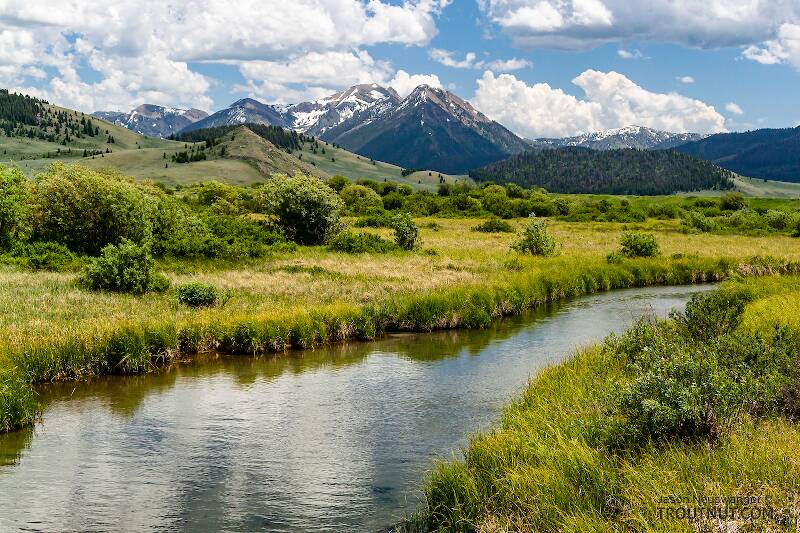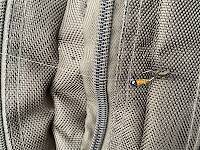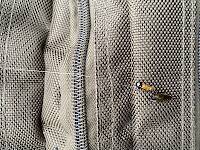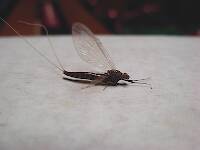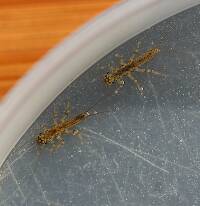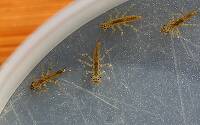
Hex Mayflies
Hexagenia limbata
The famous nocturnal Hex hatch of the Midwest (and a few other lucky locations) stirs to the surface mythically large brown trout that only touch streamers for the rest of the year.
Featured on the forum

As far as I can tell, this species has only previously been reported from one site in Oregon along the Columbia gorge. However, the key characteristics are fairly unmistakable in all except for one minor detail:
— 4 small yellow spots on frons visible in photos
— Narrow occipital spinule row curves forward (but doesn’t quite meet on stem of ecdysial suture, as it's supposed to in this species)
— Short spinules on anterior margin of front legs
— Short rposterior row of blunt spinules on abdominal tergae, rather than elongated spinules dorsally
I caught several of these mature nymphs in the fishless, tiny headwaters of a creek high in the Wenatchee Mountains.
— 4 small yellow spots on frons visible in photos
— Narrow occipital spinule row curves forward (but doesn’t quite meet on stem of ecdysial suture, as it's supposed to in this species)
— Short spinules on anterior margin of front legs
— Short rposterior row of blunt spinules on abdominal tergae, rather than elongated spinules dorsally
I caught several of these mature nymphs in the fishless, tiny headwaters of a creek high in the Wenatchee Mountains.

Troutnut is a project started in 2003 by salmonid ecologist Jason "Troutnut" Neuswanger to help anglers and
fly tyers unabashedly embrace the entomological side of the sport. Learn more about Troutnut or
support the project for an enhanced experience here.
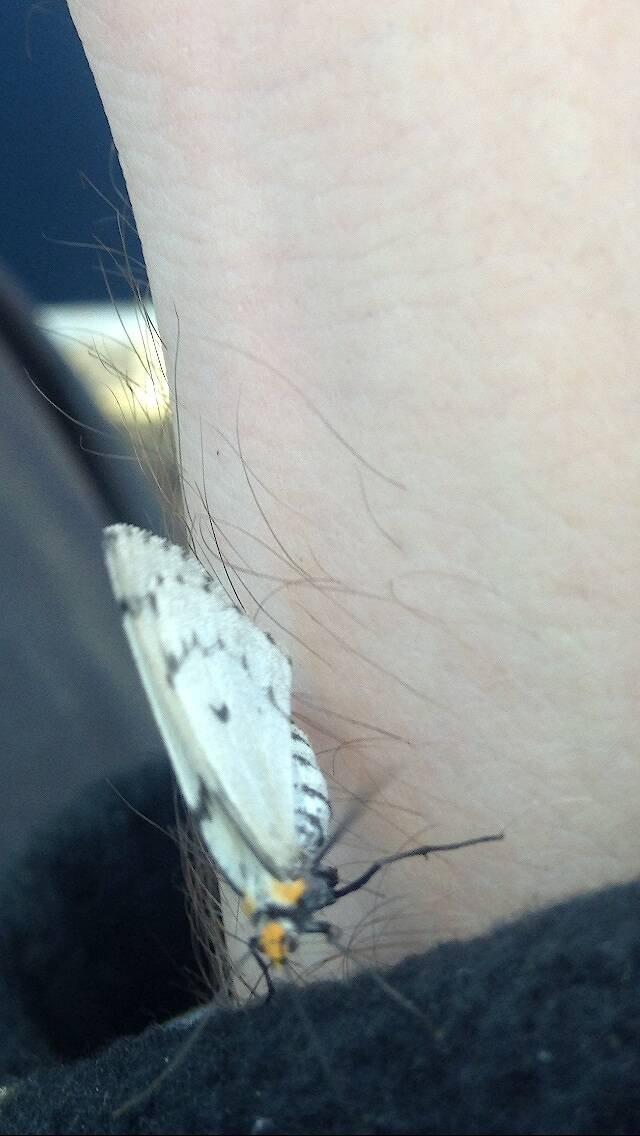
Diver on Sep 11, 2016September 11th, 2016, 6:21 pm EDT
Hi there, I found this insect skittering on the surface of a lake. Is this a terrestrial insect that blew onto the water? I cannot find a similar picture. I thought it might be a caddis species. This was in northern ontario on a canadian shield lake.
Thank you, Richard
Thank you, Richard
Taxon on Sep 11, 2016September 11th, 2016, 9:04 pm EDT
Millcreek on Sep 12, 2016September 12th, 2016, 7:53 am EDT
Roger,
I think it's likely L. semiclarata as well, but it's not aquatic as far as I can determine. The larvae feed on alders, chokecerries, juneberries, hawthorns, poplars and Prunus sp. I can't determine where it pupates, but there are no references to underwater pupation.
Mark
I believe it to be the aquatic moth, Lomographa semiclarata (Bluish Spring Moth).
I think it's likely L. semiclarata as well, but it's not aquatic as far as I can determine. The larvae feed on alders, chokecerries, juneberries, hawthorns, poplars and Prunus sp. I can't determine where it pupates, but there are no references to underwater pupation.
Mark
"If we knew what it was we were doing, it would not be called research, would it?"
-Albert Einstein
-Albert Einstein
Taxon on Sep 12, 2016September 12th, 2016, 8:53 am EDT
Mark-
Yes, I should have said non-aquatic. :-)
Yes, I should have said non-aquatic. :-)
Millcreek on Sep 12, 2016September 12th, 2016, 10:45 am EDT
Roger,
Just keeping you honest :).
Just keeping you honest :).
"If we knew what it was we were doing, it would not be called research, would it?"
-Albert Einstein
-Albert Einstein
Diver on Sep 12, 2016September 12th, 2016, 12:15 pm EDT
Hello and thank you! I had a great deal of fun last night after posting using various keys trying to come up with the species. I did not come anywhere close to the right guess! Thanks again Taxon and Millcreek.
Quick Reply
Related Discussions
Topic
Replies
Last Reply
13
Jul 25, 2014
by Millcreek
by Millcreek

